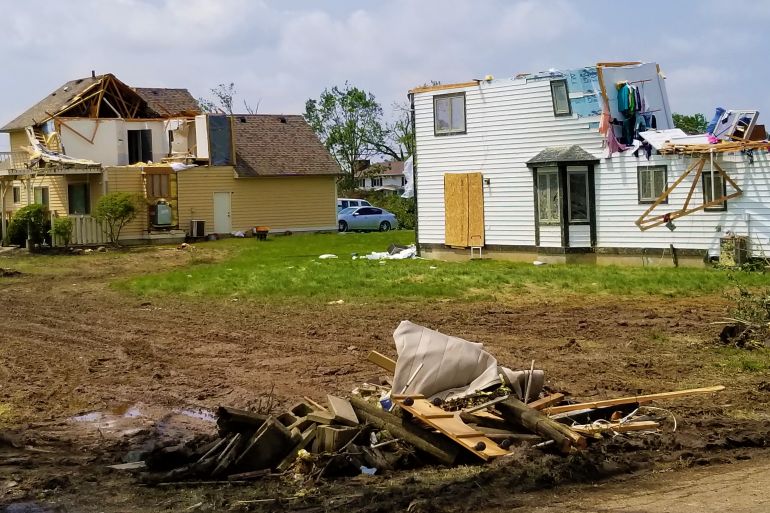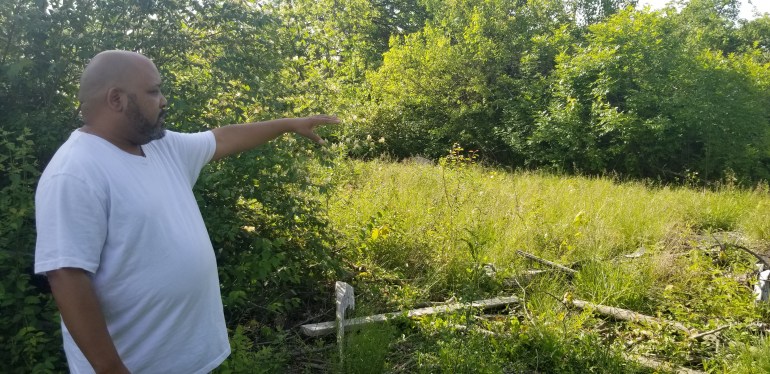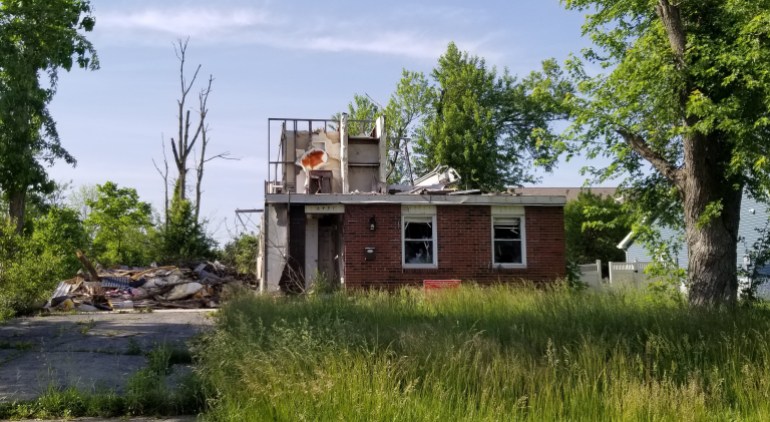Tornado Alley’s eastward shift threatens millions of Americans
Highly destructive tornado activity has been moving into US states with denser metropolitan populations.

Trotwood, Ohio – Three years ago, Derrick Stephens and his family experienced one of the most traumatic nights of their life as a powerful tornado whipped through their Ohio neighbourhood.
The tornado, packing winds of about 270 kilometres per hour (268 miles per hour), destroyed much of the family’s home in the western city of Trotwood.
Keep reading
list of 3 itemsTornadoes rip through Texas, more storms threaten US’s south
US: At least one killed in New Orleans area tornado
“We lost 90 percent of our belongings and 75 percent of our home,” Stephens told Al Jazeera.
“After it hit, I came outside and could see the tornado moving away. There was this green lightning around it. It was the weirdest thing.”
The storm was part of a broader outbreak of dozens of significant tornadoes across the US in May 2019. They levelled homes, trees and businesses, damaging approximately 500 houses in Trotwood alone. The city’s mayor said it could take a decade to recover from the estimated $18m in damages. Miraculously, just two deaths were attributed to the string of tornadoes.
For decades, the most active tornado zone in the US – known as Tornado Alley – has been located more than 1,000km west of Trotwood, largely in the states of Texas, Oklahoma, Kansas, Nebraska and South Dakota. But the danger zone appears to be shifting, as evidenced recently by devastating tornadoes in Michigan and Minnesota.

Indeed, a growing bank of research is finding that highly destructive tornado activity is moving eastwards into states with denser metropolitan populations, putting millions more people at risk of severe weather events.
“[The shift to the east] seems to be a consistent trend in the modelling … Warmer temperatures, more moisture coming off the Gulf of Mexico seem to be supporting that,” Perry Samson, a professor of atmospheric science at the University of Michigan, told Al Jazeera.
As more people move into areas that are prone to tornadoes, resulting in the development of housing and infrastructure, the potential threat intensifies, Samson said.
“It’s more that factor that we worry about the most; there’s going to be more impact because there is more to be impacted,” he said.
Changing climate
Just as worrying for millions of Americans is that violent tornadoes, which have traditionally occurred most commonly in the northern hemisphere spring and summer seasons, are becoming an increasing threat all year round.
Last December, dozens died when a tornado packing 310km/h (193mph) winds hit Kentucky, devastating towns as it tracked a path of more than 260km (160 miles), in what experts say was an extremely uncommon event.
“That storm moved through an environment that was favourable [for tornado activity] for several hours. That’s something that normally doesn’t happen that often in December,” John Allen, an associate professor of meteorology at Central Michigan University, told Al Jazeera.
When it comes to the eastward shift of Tornado Alley, most of the incidents are “actually coming from the winter-time period”, he added.

Tornadoes form in the presence of severe thunderstorms, which typically occur when warm, humid air meets cold, dry air. Significant changes in wind speed or direction can then lead to the formation of tornadoes.
While climate change has led to more extreme weather events around the globe, there is no definitive consensus among scientists on its role in shifting tornado activity.
A warmer, wetter climate could play a role in various types of extreme weather events. But when it comes to tornadoes, it has been difficult to identify long-term trends. This is due both to changes in weather monitoring systems and the increasing ease with which researchers and members of the public can now detect and report tornadoes.
“We can discern whether a storm is going to produce the kinds of conditions in which tornadoes happen,” said Samson, whose department runs a website that maps tornadoes.
“But that’s not sufficient to be able to say, with any confidence, whether tornadoes are changing or will be changing in the future.”
Last December, after the Kentucky devastation, the White House said it would task the federal Environmental Protection Agency (EPA) with investigating what role the changing climate might have played in the deadly tornadoes.
Al Jazeera reached out to the EPA for an update on the status of the investigation, but did not receive a reply.
For Stephens, who only moved back to his Trotwood home last summer, the process of rebuilding has been difficult – and he is convinced that climate change played a role in the disaster.
“I think the damage was done starting with the Industrial Revolution and the wars that have happened since then that created the demand for industrial products like gas and oil,” Stephens said.
“Before the 1960s, there was no Environmental Protection Agency, no pollution standards,” he said.
“Unfortunately, we all know that humans in general don’t really care.”